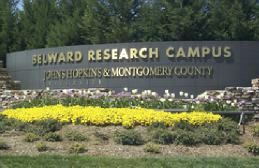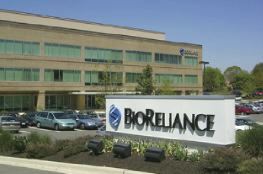| S |
tates across America are developing strategies for cloning the biotechnology industries that have emerged in California, Massachusetts, and Maryland over the past 30 years.
In the wake of the burst high technology bubble, biotech offers them the promise of renewed economic growth.
Or does it? According to a recent report from the Brookings Institution Center on Urban and Metropolitan Policy, the biotechnology tree may have only nine branches. The report, entitled
Signs of Life: The Growth of Biotechnology Centers in the U.S.,
says that nine of the nation’s 51 largest metropolitan centers house three-fourths of the biotech firms formed since 1990. This
big nine
include Boston, San Francisco, Philadelphia, New York City, San Diego, Seattle, Raleigh-Durham, Los Angeles, and the Washington, D.C./Baltimore corridor.
These nine biotech regions are leaders because they have two necessary elements for industry growth: strong research capacity and the ability to convert research into successful commercial activity,
says the Brookings report.
The report goes on to imply that other regions only now attempting to start biotech economies will probably fail.
Nevertheless, a number of states have decided to embark on a second wave of biotechnology area development. Among these are Michigan, Missouri, New York and Pennsylvania.
The Long Road To Biotech Success
At the very least, developing a bio-economy takes time, judging by the experience of Montgomery County, Md.
Montgomery County lies just to the northwest of Washington, D.C. Within its borders are the National Institutes of Health in Bethesda and the National Institute of Standards and Technology in Gaithersburg.
In the early 1980s, county planners seeking to capitalize on these research capabilities built a biotech business park in Rockville. Called the Shady Grove Life Sciences Center, it spanned 315 acres and has been largely full ever since it was constructed
|
Today, Shady Grove houses some of the most important names in biotechnology,
says Scott Sloat, communications manager for Montgomery County’s Department of Economic Development.
These include Human Genome Sciences, BioReliance, Institute for Genomic Research, Otsuka Pharmaceuticals, and EntreMed. Johns Hopkins has established a satellite biotech research and teaching campus there as has the University of Maryland.
The success of Shady Grove led the county to construct the Maryland Technology Development Center, an incubator, on a neighboring lot. Today, this center houses 28 companies and has a waiting list with 10 names on it.
During the 25 years since the County’s decision to build Shady Grove, more than 200 biotech companies, the third largest industry cluster in the country, have opened their doors in Montgomery County.
These companies and the educational and government research facilities located in Montgomery County employ approximately 35,000 people, almost 10 percent of the area’s labor pool of 400,000 people.
Already well established as a biotech center, the County is continuing to enhance its offerings. County Executive Douglas M. Duncan recently announced plans to construct two new science and technology centers, one to the north of Shady Grove and another to the east. According to Sloat, the County will build seven new incubators across the region by 2007.
Qiagen Sciences, Inc. of Hilden, Germany, recently moved into its new North American headquarters in Montgomery County. The company had five requirements for the site, says Mike Burgett, the company’s vice president and general manager.
First, the location had to be on the east coast, to offset the time difference between Hilden and the new headquarters. The site had to offer excellent surface and air transportation to accommodate the company’s airfreight shipping requirements. Educational requirements for the labor force ranged from high school diplomas to bachelor’s degrees and up to fill manufacturing and research and development slots. Because the company collaborates closely with the research market into which its products sell, another requirement involved a conveniently located academic environment.
Finally, the company wanted to locate near other biotech companies.
This is a collaborative business,
says Burgett.
It involves a lot of joint ventures and cooperation with other companies. So locating within a biotech community was important to us.
Qiagen only looked at east coast regions with existing biotech clusters. Possibilities included Boston, the research triangle in North Carolina, and Montgomery County.
All three of these areas met our criteria,
Burgett says.
The decision came down to how interested the area was in us. Montgomery County provided loans and property tax relief. The County also solved a major problem for us. We had to start construction by early 2000, and their people did back-flips to make sure we got the zoning changes and site approvals done on time.
Expanding Regional Biotech
Clusters Statewide
Qiagen’s determination to locate within the collaborative sphere of an existing biotech region illustrates the difficulties, emphasized in the Brookings report, faced by regions beginning their bio-economic development process.
Nevertheless, economic development officials in New York and Pennsylvania believe they can leverage past experience in building regional biotech and high tech clusters into other areas of their states.
Serving as headquarters for seven of the nation’s 10 largest pharmaceutical companies, the New York City metropolitan area ranks among the nine existing regional centers of biotechnology mentioned by the Brookings report. Since the 1980s, biotech clusters have sprung up in the City itself, just south on Long Island, and just north in the Hudson Valley.
|
Over the past half-dozen years, Empire State Development, the state’s economic development arm, has spurred further biotech growth in upstate New York.
We’ve gotten to the point where a biotech company has a number of options across the state,
says Louis Garguilo, director of industry development with Empire State.
You might not expect to find a biotech cluster in Rochester. In fact, you will find Genencor, Johnson & Johnson, Bausch and Lomb, and others located there.
Similarly, you might not expect to find biotechnology activity in Buffalo. Nevertheless, Buffalo hosts companies such as Cellular Products Inc., Fertility Acoustics, and Tetra Link International
Today, approximately 800 biotechnology and pharmaceutical concerns employing nearly 44,000 people operate across New York State.
Garguilo attributes the expansion of the biotech industry beyond New York’s traditional locations to the state’s strong support for research and aggressive financial support for companies considering a New York location.
New York ranks third among all states in acquiring research grants from the National Institutes of Health. In addition, state government provides strong support for research. In 2001, for example, Governor Pataki unveiled a $1-billion high tech/biotech initiative to create research centers across the state. The state also provides strong support for university research.
Finally, companies locating in certain New York regions may qualify for generous tax incentives.
If you locate in an Empire Zone, you may be able to operate totally free of state corporate, franchise and sales taxes for a solid 10 years,
says Garguilo.
On the discretionary side, the state also provides capital grants or loans.
Pennsylvania plans to test whether New York’s experience is closer to the truth than the conclusions of the Brookings report.
That report focuses only on one segment of the life sciences industry, bio-pharma or drug discovery and pharmaceuticals,
says Dennis Yablonsky, president and CEO of the Pittsburgh Life Sciences Greenhouse in Pittsburgh.
This is only one segment of the industry. There are others, such as medical devices and tissue engineering.
Pennsylvania has a sturdy foundation in biotech. The Commonwealth hosts more than 1,500 life sciences companies employing more than 66,000 workers. It ranks second in pharmaceutical employment, third in biotechnology employment, and fourth in medical-device companies. But the lion’s share of this activity is in the eastern part of the state, around Philadelphia, a firmly established biotechnology center.
Greater Philadelphia is home to 80 percent of Pennsylvania’s biopharmaceutical industry, says Greg Byrnes, director of economic and business development for PECO Energy Co., Eighty percent of the world’s largest pharmaceutical companies have a presence in the Greater Philadelphia area. This is impressive, says Byrnes, because these companies are a significant source of talent, ideas, partnerships and expertise for smaller life sciences firms. Large pharmaceutical companies also provide an important source of capital for biotech start-ups.
Yablonsky believes that Pittsburgh, 300 miles to the west, can develop its own bio-economy.
We don’t have a large base of companies, but we do have about 40,
he says.
We also have a research base at the University of Pittsburgh and Carnegie Mellon, and we rank 11th in the U.S. in terms of NIH funded research.
In addition, Yablonsky has access to capital. Governor Schweiker has allocated $2 billion of Pennsylvania’s tobacco settlement to economic development. Of that total, $1.6 billion will go to life sciences research; $60 million will provide venture capital to help develop commercial life sciences businesses; and $100 million will fund three life sciences greenhouses that have formed in Philadelphia, Hershey, and Pittsburgh. Each greenhouse has received approximately $33 million.
The innovative greenhouse concept lies at the heart of Pennsylvania’s effort to expand bio-economies beyond Philadelphia. A greenhouse, according to Yablonsky, is kind of an intellectual incubator.
We’re building knowledge assets,
he says. Through the greenhouse, Yablonsky’s seven-person staff will fund research, disperse venture capital funds, help companies and universities apply for federal and foundation grants, and raise additional money for the process.
Leveraging Research Strengths
Unlike Maryland, New York, and Pennsylvania, the states of Michigan and Missouri do not host one of the nine major biotech centers mentioned in the Brookings report. On the other hand, both states have regions that Brookings classifies as strong in terms of life sciences research: Detroit in Michigan and St. Louis in Missouri.
While the Brookings report offers little hope for such undertakings, both states are working to leverage their research strengths into biotechnology economic growth.
In fact, Michigan already hosts over 300 life sciences and biotech companies employing 17,000 people. These companies invest approximately $1.5 billion in research and development in Michigan every year. Research institutions in the state add another $700 million annually to R&D.
According to Michael Finney, vice president for emerging business sectors with the Michigan Economic Development Corporation (MEDC), a private not-for-profit company that serves as the state’s economic development arm, 95 percent of the state’s biotech companies and research institutions operate in a life sciences corridor running across the southern tier of the state, from Detroit and Ann Arbor in the east to Grand Rapids in the west.
MEDC’s strategy for biotech economic development aims to build on the state’s research and development achievements by fostering commercialization. As a private company, MEDC can deliver venture capital to promising new companies in the form of equity investments or loans convertible to equity. Since 1999, when the program began, MEDC has committed about $140 million in research grants to universities and loans to private companies.
As a not-for-profit company, MEDC will channel returns from biotech back into biotech development.
We’ve tried to structure our program so the state will benefit if one of these companies hits it big,
Finney says.
Missouri has adopted a more regional strategy for developing its research strengths into a nationally competitive life sciences industry. Developed in a study conducted by the Battelle Memorial Institute of Columbus, Ohio, the strategy centers around an area that a St. Louis-based economic development organization has labeled the
BioBelt.
BioBelt is an intentionally ecumenical term,
says Richard C. D. Fleming, CEO of the St. Louis Regional Chamber and Growth Association.
It doesn’t refer just to St. Louis or Missouri. It refers to the life and plant sciences in a multi-state area in this portion of the country.
Pointing to 390 life sciences enterprises employing more than 22,000 people in St. Louis, Fleming calls the city the heart of the BioBelt.
The Battelle study identified a life sciences research and commercial strip that runs across the central Illinois and Missouri and recommended a marketing campaign to brand the region. BioBelt is the result.
But the strategy goes well beyond marketing and focuses strongly on forming venture capital funds that will enable the region to commercialize its life science research developments. While the rest of the country has suffered through an economic downturn, the BioBelt brand has raised more than $287 million in five venture capital funds with specific life science missions, according to Fleming.
In a very short period of time, the people and resources of the BioBelt have come together to create this extraordinary momentum for making the St. Louis region a global center for plant and life sciences,
Fleming says.
Will St. Louis achieve its goal? In the end, the cautionary Brookings report hangs over the efforts of any state to move biotech development beyond the
big nine
regions. Nevertheless, while economic development officials in New York, Pennsylvania, Michigan, and Missouri have studied Brookings’ pessimistic assessment of their pro-spects, each believes it possible to overcome the obstacles they face.
The Building Block of Biosciences
by DR. MICHAEL JOHNS
Imagine a world without cancer, heart disease, arthritis, AIDS, or life-limiting genetic deficiencies. Here in Georgia, it is getting easier to imagine such a world.
Georgia is now a center of pioneering bioscience research and of vigorous biotechnology industry growth, where a model partnership of government, universities and the private sector is catalyzing improved medical treatments and technology, new drugs and vaccines and revolutionary new ways to reverse neurological diseases like Alzheimer’s.
The opportunities in the metro Atlanta region for further growth in drug discovery, genomics and bioinformatics, agricultural biotechnology, tissue engineering, and advanced medical technologies are vast.
Anchored by nationally recognized research universities, the Centers for Disease Control and Prevention, the American Cancer Society, and by dedicated state support, metro Atlanta’s biosciences se ctor has grown over 150 percent over the past decade. Biotech success stories abound in companies like AtheroGenics, Inhibitex, Solvay Pharmaceuticals, Theragenics, Merial, Novoste and Serologicals.
Currently there are more than 200 biosciences companies employing more than 10,000 in metro Atlanta. According to the Ernst & Young 2002 Global Biotechnology Report, Georgia now ranks 9th in the nation for its biotechnology industry.
This growing success story is a tribute to the unique collaboration between the business community, universities and state government towards the goal of doubling the number of bioscience companies in the Atlanta region over the next 10 years.
The Georgia Research Alliance (GRA), for example, a quasi-public agency, has invested more than $300 million in bioscience technology development centers and core research facilities in Georgia, more than $150 million of that in institutions based in the Atlanta area. The GRA Eminent Scholar program has created a statebrain trust" by attracting and providing support to more than 20 top scientists in the area.
In 2001, Governor Roy Barnes introduced the Georgia Cancer Coalition, a $400 million program of investments in research, clinical facilities and cancer prevention and outreach focused not only on improving healthcare for all Georgia citizens but also increasing economic growth through additional biotechnology development.
In the six years since I arrived at Emory University’s Robert W. Woodruff Health Sciences Center, we have invested hundreds of millions of dollars in significantly expanding and improving our bioscience research facilities and in recruiting world-class scientists. We have realized an incredible return on our investment, increasing the annual amount our center brings into the state in research funding from the National Institutes of Health, National Science Foundation, and other agencies and foundations from $132.8 million to $255.2 million.
Collaboration with and among our sister institutions is producing exciting opportunities, including joint biomedical engineering and tissue engineering centers at Emory University and Georgia Institute of Technology and a multi-institutional behavioral neuroscience center that attracts funding from both government and industry.
New university biotechnology incubators are providing start-up support for numerous research initiatives born in university laboratories. These centers include EmTech Bio at Emory and Georgia Tech, Georgia Tech’s Advanced Technology Development Center, CollabTech at Georgia State University, and the Georgia BioBusiness Center at the University of Georgia. Technology transfer programs at area universities provide a key interface between academic research and industrial partners.
All of these exciting developments and more make this an exciting place to be and ensure that Atlanta and Georgia will be at the forefront of a whole new world of progress in bioscience and healthcare.Dr. Michael Johns, Executive Vice President for Health Affairs at Emory University, is Co-Chairman of the Metro Atlanta Bioscience Council. For more information on Atlanta’s bioscience industry visit www.AtlantaBioscience.com.




